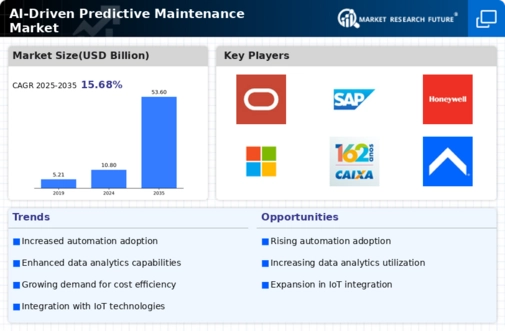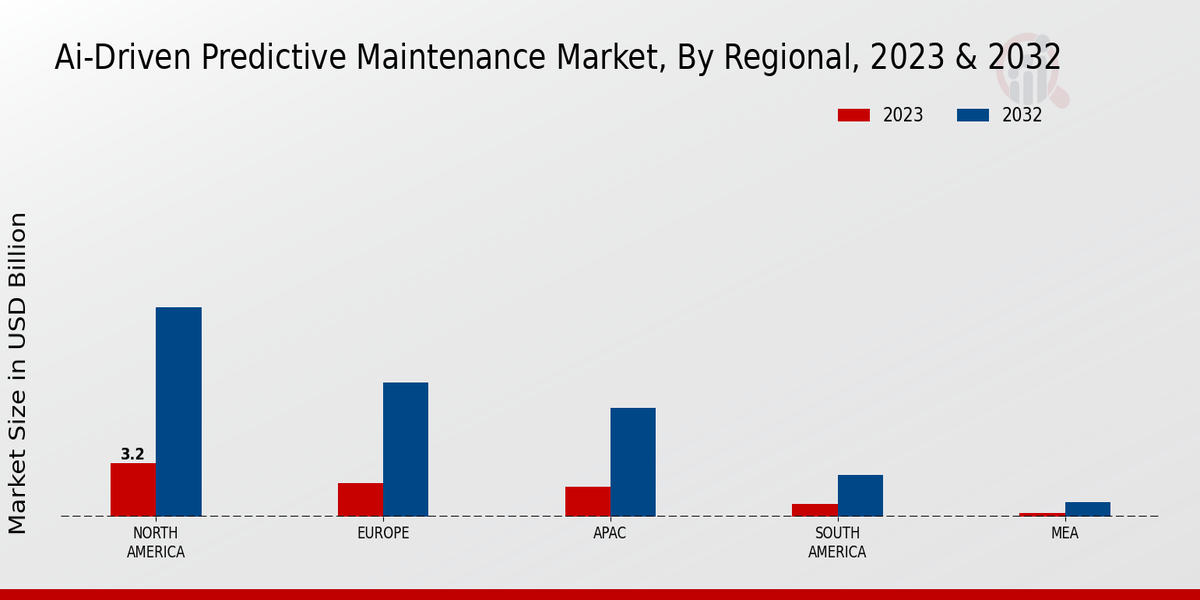Integration of IoT Devices
The integration of Internet of Things (IoT) devices is a pivotal driver in the AI-Driven Predictive Maintenance Market. IoT devices facilitate real-time data collection from machinery, providing valuable insights into operational performance. This influx of data enhances the predictive capabilities of AI systems, allowing for more accurate maintenance forecasts. As industries adopt IoT technologies, the synergy between IoT and AI-driven predictive maintenance becomes increasingly apparent. It is estimated that the number of connected IoT devices will reach over 75 billion by 2025, significantly contributing to the data pool available for predictive analytics. This integration not only improves maintenance schedules but also fosters a proactive approach to equipment management, thereby enhancing overall operational efficiency.
Growing Focus on Sustainability
The AI-Driven Predictive Maintenance Market is also being propelled by a growing focus on sustainability. Organizations are increasingly aware of the environmental impact of their operations and are seeking ways to reduce waste and energy consumption. Predictive maintenance plays a crucial role in this endeavor by ensuring that equipment operates at optimal efficiency, thereby minimizing resource usage. By preventing unexpected breakdowns, companies can reduce the need for emergency repairs, which often result in higher energy consumption and waste. Furthermore, the adoption of AI-driven solutions aligns with corporate sustainability goals, as it promotes responsible resource management. This trend is likely to gain momentum as regulatory pressures and consumer expectations regarding sustainability continue to rise.
Rising Demand for Operational Efficiency
The AI-Driven Predictive Maintenance Market is experiencing a notable surge in demand for operational efficiency across various sectors. Organizations are increasingly recognizing the potential of AI-driven solutions to minimize downtime and enhance productivity. According to recent estimates, companies that implement predictive maintenance strategies can reduce maintenance costs by up to 30 percent. This trend is particularly evident in manufacturing and transportation sectors, where equipment reliability is paramount. As industries strive to optimize their operations, the integration of AI technologies into maintenance practices appears to be a strategic move. The ability to predict equipment failures before they occur not only saves costs but also extends the lifespan of machinery, thereby contributing to overall operational efficiency.
Advancements in Machine Learning Algorithms
The AI-Driven Predictive Maintenance Market is significantly influenced by advancements in machine learning algorithms. These algorithms enable systems to analyze vast amounts of data generated by machinery and equipment, identifying patterns that may indicate potential failures. The sophistication of these algorithms has improved dramatically, allowing for more accurate predictions and timely interventions. As a result, organizations are increasingly adopting AI-driven predictive maintenance solutions to enhance their maintenance strategies. Reports suggest that the market for machine learning in predictive maintenance is expected to grow at a compound annual growth rate of over 25 percent in the coming years. This growth reflects the increasing reliance on data-driven decision-making in maintenance practices, underscoring the importance of machine learning in the AI-Driven Predictive Maintenance Market.
Increased Investment in Digital Transformation
The AI-Driven Predictive Maintenance Market is witnessing increased investment in digital transformation initiatives. Organizations are recognizing the necessity of adopting advanced technologies to remain competitive in their respective fields. This shift towards digitalization encompasses the implementation of AI-driven predictive maintenance solutions, which are seen as essential for modernizing maintenance practices. According to industry reports, investments in digital transformation are projected to exceed several hundred billion dollars in the coming years. This influx of capital is expected to accelerate the adoption of AI technologies, enabling organizations to leverage predictive maintenance for enhanced operational performance. As businesses strive to adapt to the evolving technological landscape, the integration of AI-driven solutions into maintenance strategies is likely to become a standard practice.


















Leave a Comment